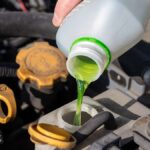Winterizing Your Ride: Get Ready for the Chill
Winter is creeping up, and it’s time to get that car prepped for the cold. Freezing temps, icy roads, and snowstorms can really mess with a vehicle if it’s not ready to roll.
Essential Tips for Winterizing Your Vehicle
Winterizing a car is all about making sure it can handle whatever Mother Nature throws its way. If car maintenance has been on the back burner or there’s a project that needs parts, check out resources for the right stuff for that ride.
For those thinking about hitting the shop for a winter check-up, most mechanics will cover the basics. But for the DIY enthusiasts, here’s a quick rundown to kick off the winter prep:
1. Check Your Battery
Cold weather can be rough on batteries. Make sure it’s charged and in good shape. If it’s older than three years, it might be time for a new one. A multimeter can help check the voltage—12.6 volts or higher is what to aim for. If that sounds like a foreign language, a pro can do a load test for peace of mind.
2. Inspect Your Tires
Tires are the only thing between the car and the road, so they need to be solid. Regularly check the tread depth and tire pressure, and keep an eye out for any damage. Switching to winter tires or studded tires can make a big difference on icy roads. Aim for at least 6/32 of an inch (4.8 mm) of tread depth for better grip on slick surfaces.
3. Test Your Lights and Wipers
Visibility is key when driving in winter. Make sure all lights are working and swap out any burnt bulbs. If one headlight goes, it’s smart to replace both. Don’t forget to check the wipers—if they’re worn out, it’s time for new ones.
4. Check Antifreeze and Coolant Levels
Antifreeze is a must to keep the engine from freezing up. Make sure the levels are topped off and that the mix is right for the local winter weather. If antifreeze is low, topping it off is a simple task anyone can handle.
5. Keep Your Gas Tank Full
Keeping the gas tank at least half full during winter is a smart move. It helps prevent fuel lines from freezing and ensures there’s enough gas in case of emergencies. If traffic gets jammed up, having enough fuel to keep the car warm is a lifesaver.
6. Top Off Your Windshield Wiper Fluid
Regularly checking and topping off windshield wiper fluid is crucial, especially in winter when road grime can build up. Having enough fluid keeps visibility clear when driving through snow or slush.
Preparing for Icy Roads and Freezing Temps
Once the vehicle is winter-ready, it’s time to prep for the icy roads ahead. Here are some tips to stay safe:
Pack an Emergency Kit
Having an emergency kit in the car is a must if getting stranded becomes a reality. At the very least, pack:
- Blankets or sleeping bags
- Flashlight with extra batteries
- First aid kit
- Non-perishable food
- Water
Road flares can also be a lifesaver, alerting other drivers if there’s a breakdown. If there are kids in the car, throw in some storybooks or games to keep them entertained during long waits.
Drive Slowly and Cautiously
Winter roads can be tricky, so it’s smart to adjust driving habits. Slow it down, keep a safe distance, and avoid sudden moves like hard braking or quick accelerations.
Be Prepared for Emergencies
Always have a phone and charger handy, and save the number for roadside assistance. If stranded, it’s best to stay with the vehicle and call for help.



